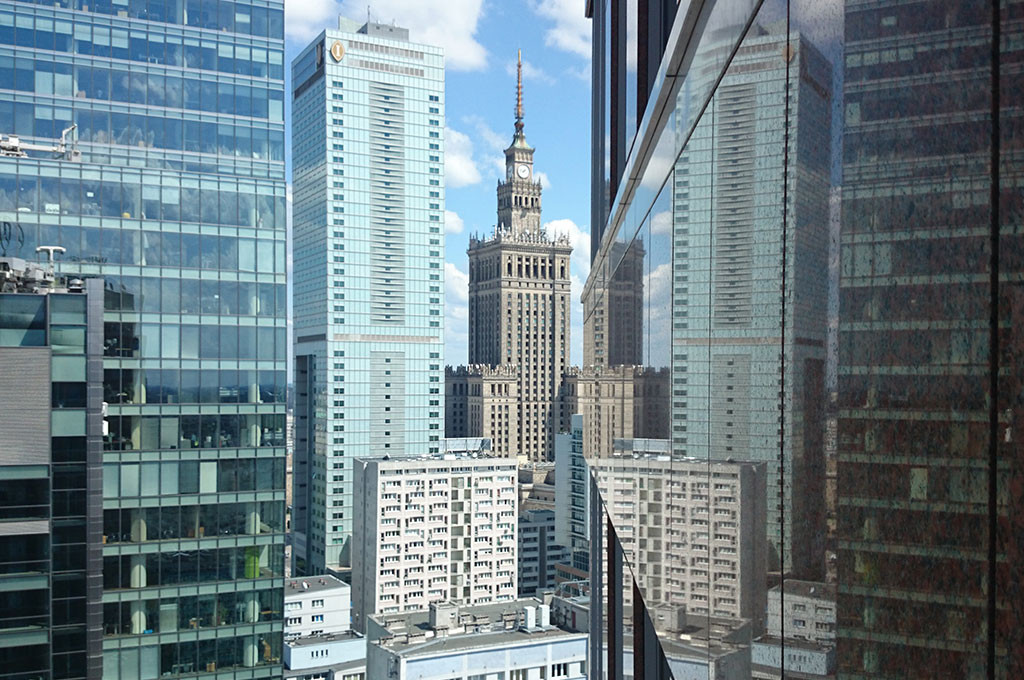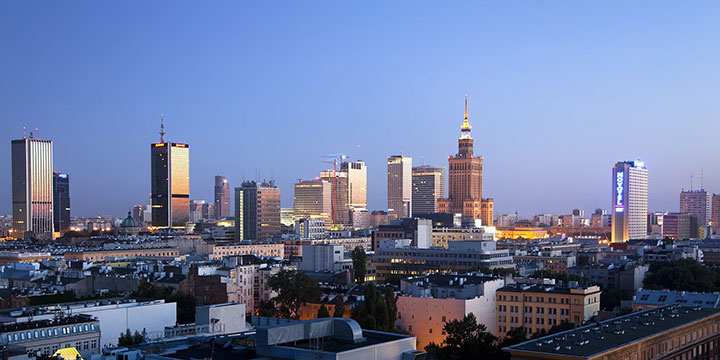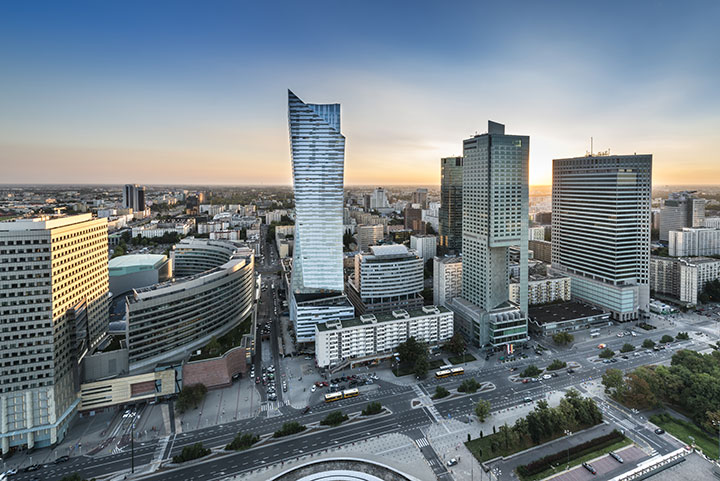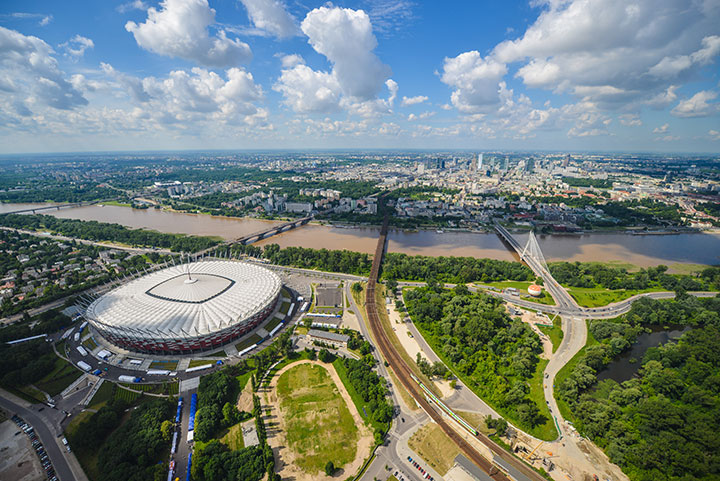One of the largest European developers recently said that, if you want to grow in the development sector in Central Europe, you have to think about Poland. I can’t disagree with him.
So, why Poland? Here are five points that you should consider.
1. Stability and good ratings
Poland is a stable market with a transparent legal system, a market with a developed and stable financial system. We are one of the few countries that have coped well with the global recession. The evidence? According to the Polish Information and Foreign Investment Agency (PAIiIZ), which cites data from the European Commission, the Polish economy grew by 3.2 percent in 2014. This shows that our economic growth is higher than in the European Union as a whole, where average GDP growth this year is expected to be 1.6 percent.
Plus: Taking the pulse of the Central and Eastern European Market
Poland is the largest economy in Central and Eastern Europe and the sixth largest economy in the European Union, and has a population of over 38.5 million people. This means that we are the sixth most populous country in the EU. Poland has been a member of the European Union since 2004. The ratings of the Polish economy issued by reputable international rating agencies are very positive. Standard & Poor’s (S&P) recently raised the outlook from stable to positive. Furthermore, Moody’s rating has been A2 since 2002. According to the agency, this is one of the most stable ratings in Moody’s.
Also: Investors flock to fast casual | Retail giants explore China
2. The investment market: Poland is the leader in the region
Almost all global corporations can be found among the tenants of office buildings, shopping centers, and industrial and logistics sites in Poland. That’s why real estate in Poland attracts capital from around the world. In 2014, the total value of investment transactions in Poland amounted to 3.18 billion euros. Thus, we have become a leader in Central and Eastern Europe, gaining a 30 percent market share. Testimony to the importance of regional cities is provided by the decisions of investors, who have invested approximately 60 percent of their capital outside Warsaw.
Last year, Poland attracted capital mainly from Germany, the U.S.A. and the U.K. Active buyers included companies such as Blackstone, Starwood, Segro, Prologis, Hillwood, WP Carey, Hines and Resolution. The largest investor was Deutsche Asset & Wealth Management (formerly RREEF), which acquired properties worth half a billion euros. Asian funds from China and Korea are interested in buying Polish real estate, in addition to other capital from the Far East, which is taking a serious look at the Polish market. It is worth noting that the rate of return for the best office buildings in Warsaw is currently about 6 percent. Compared to Western Europe, where rates are at the level of 3 to 4 percent, this mean much higher profits for investors.
Meanwhile, the investment risk in Poland is not larger, and investing in high-end office buildings ensures a steady increase in their value. An example is the Metropolitan office building (the Warsaw headquarters of Colliers International), which was completed in 2003. The office building first changed ownership in 2006, and it was then valued at approximately 169 million euros. Last year, it was bought by funds managed by Deutsche Asset & Wealth Management for 190 million euros.
3. Poland is more than Warsaw
Most of the real estate markets in the countries of Central and Eastern Europe are growing mainly in their capital cities. Poland is the exception. Of course, the Polish capital, Warsaw, is the largest market, but the commercial real estate sector is also rapidly developing in other cities. More than 60 percent of Polish people live in towns and cities, of which there are 917 with 17 having more than 200,000 residents. Modern commercial buildings (office buildings, shopping centers, and industrial and logistics sites) are present in Warsaw, Krakow, Wroclaw, Tri-City, Poznan, Katowice, Lodz, Szczecin and Lublin. Poland is a very attractive market for the modern services (outsourcing) companies. In the “2015 Top 100 Outsourcing Destinations” ranking by Tholons, there is only one European city in the top 10 of the best locations for the outsourcing sector — Krakow.
It is worth taking note of labor costs, by which measure Poland is very attractive to investors. According to PAIiIZ, in the richest countries of EU 15, an hour of work costs on average from 28 to up to 48 euros. In Poland, it is 7.6 euros. And one more thing: The development of the office market shows how dynamically Poland has changed in recent years. In 1989, office space could be rented in only two buildings in Warsaw. In 2004, when Poland joined the European Union, tenants had the choice of 2.5 million square meters of modern office space. At the end of 2014, the supply of office space in major Polish cities reached 6.9 million square metres, and another 1.3 million square meters are under construction.
4. Poland is the logistics hub of Eastern Europe
It is no exaggeration to say that, since 1989, the Polish warehouse market has undergone a real revolution. Even in the 1990s, there were no modern logistics centers in Poland. Their development began only in 1995. In 2004, when we entered the European Union, there were only 1 million square meters of modern warehouse and industrial space in the country. Today, there are almost 9 million square meters. The development of this sector has been affected by a significant improvement in infrastructure. In 1989, there were only 366 km of motorways and highways in Poland, and when we entered the EU there were only 631 km. And how is it today? In Poland, there are already more than 3000 km of highways, and by 2023 a further 2300 km will be added. This is appreciated by investors from all over the world. Last year, Amazon decided to locate its warehouses in Poland. Logistic sites themselves have become a tasty morsel for institutional investors, who spent 740 million euros on them last year.
5. Shopping? Welcome to Poland!
In Poland, there are already nearly 10.5 million square meters of modern retail space. Polish shopping centers are competitive to these from Western Europe in terms of quality. They are characterized by modern architecture and offer the majority of global brands. Continued growth in purchasing power (at the moment, it is at approximately 5870 euros per inhabitant per year according to GfK) is increasing the rate of consumption. This is appreciated by international brands. In 2014 alone, more than 40 foreign brands debuted on the Polish market, including Clinique, Desigual, Adidas NEO, Fullah Sugah, Kiehl’s, Imagunarium and Kipling. Well known brands such as Lee and Wrangler opened their first stores, and Marks & Spencer unveiled its new concept: M&S Coffee to Go. Calvin Klein Jeans and Calvin Klein Watches & Jewelry also opened stores.
It is worth stressing the transparency of Polish law: The vast majority of foreign investors can enter the market without the need to have a local partner. At the same time, Poland is a great place to start a retail business. This is confirmed by the success of many Polish brands, which are now conquering other countries. These include Reserved (over 500 stores in Eastern Europe and Asia), Gino Rossi, Kazar, Mohito and Inglot (whose cosmetics are known in countries such as Ireland, Austria, Canada and the USA).
If you want to talk about Poland, come and see us at the Colliers International stand at the upcoming MIPIM fair in Cannes.
Based in Warsaw, Monika is Managing Partner for Colliers International in Poland, where she has worked for over 16 years. Monika is a member of the Royal Institution of Chartered Surveyors, YPO, CEO Round Table and Women Leadership in Business Foundation.

 Colliers Insights Team
Colliers Insights Team




